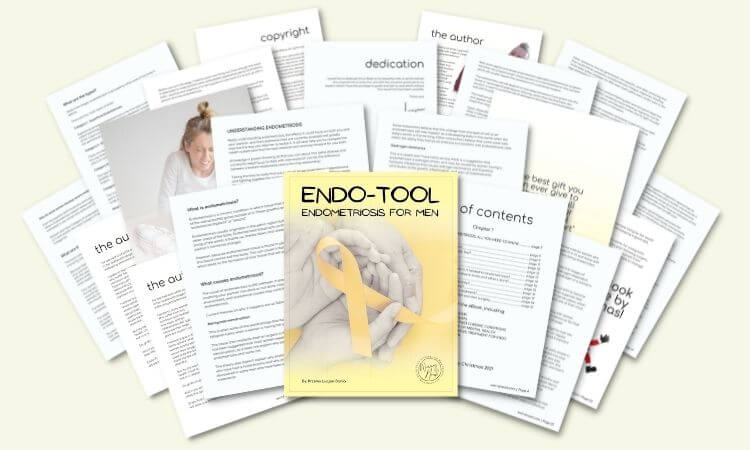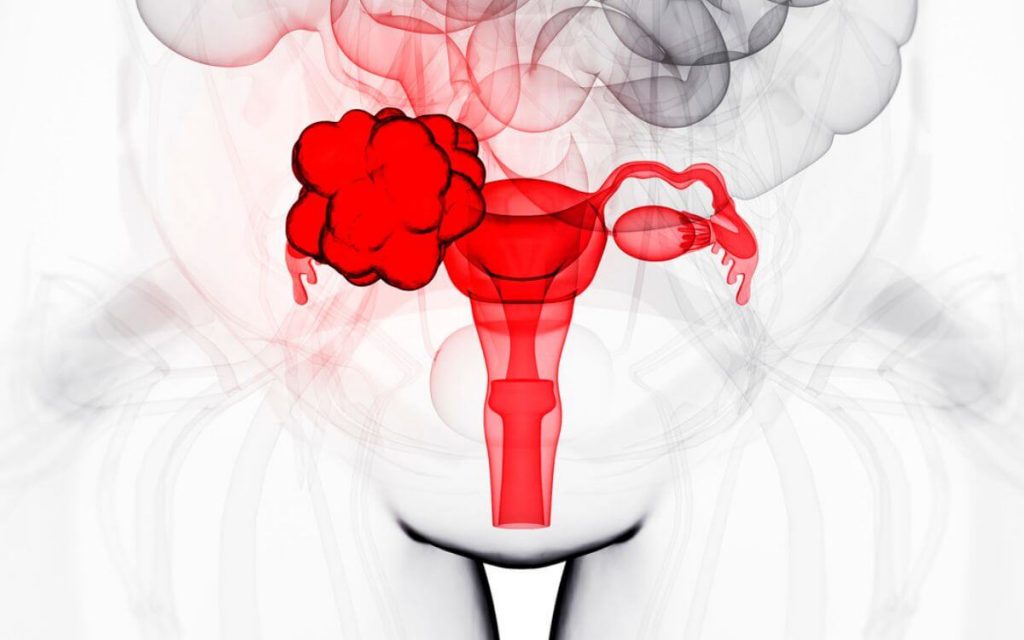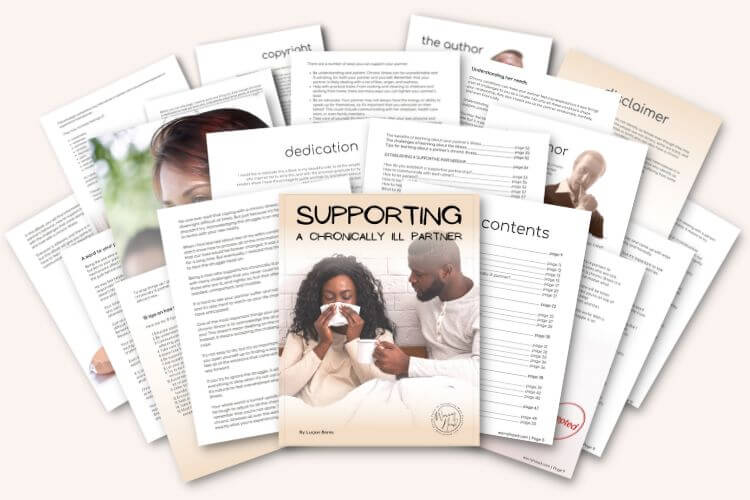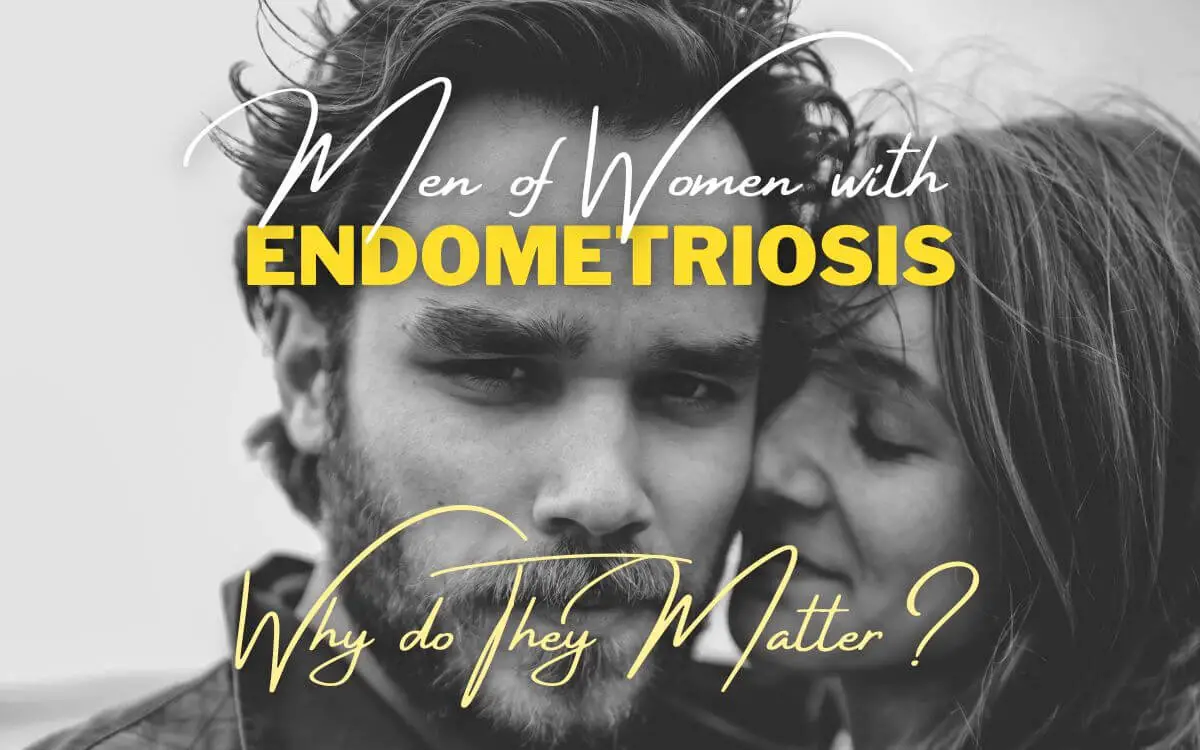Why do men of women with endometriosis have no help?
I recognized this issue even before my wife was diagnosed with endometriosis. I felt helpless and isolated as if I had no way to help her. It’s an incredibly common experience for men of women with endometriosis.
But even though endometriosis patients are women, their partners (especially men) aren’t acknowledged as people who need help too.
I do acknowledge the fact that women suffer from severe symptoms like chronic pelvic pain amongst other more severe symptoms such as recurrent miscarriages and infertility – which men have no understanding of.
That being said, men may not experience chronic pelvic pain related to endometriosis but they also experience a unique set of issues as a result of their partner’s endometriosis. This includes exhaustion, stress, and a feeling of helplessness as well as financial strain for men who are the primary breadwinners.
These are many issues that male partners face in their everyday life with someone who suffers from endometriosis. This rather long article is going to explore the impact of endometriosis on men and give men of women with endometriosis some tips on how to cope.
My personal impact of endometriosis.
My wife was diagnosed with stage 4 deep infiltrating endometriosis soon after we got married. The following year, she was additionally diagnosed with fibromyalgia disorder. This was later accompanied by multiple other conditions such as IBS, CFS, severe anemia, anxiety, depression, and even OCD.
I’m willing to bet that men of women with endometriosis are facing similar immense obstacles. I know how hard it is to watch your partner suffer and feel like you can’t do anything to help them.
For me, I felt like it was always about her and never about me. Sure, my wife felt like a burden to me and often said sorry for me, but I felt a total lack of acknowledgment from all the doctors, society, and media.
I attended medical appointments, and even countless endometriosis group meetings for women because I wanted to support my wife the best I could. And even though I was the only man in all of the groups, my presence wasn’t acknowledged.
What strikes me the most is the fact that a leading endometriosis UK charity in the United Kingdom ignored me every time I reached out to them to present them with the facts that men suffer too.
By showing the male perspective on endometriosis, supporting women with this condition could be much easier.
I reached out on three occasions to discuss my impact of endometriosis with no response. I felt totally marginalized and felt unwanted. My opinion did not matter just because I was a man.
Luckily, thanks to my blog, I give voice to male partners of endometriosis patients, men who are struggling and looking for help because they are met with silence everywhere else. In addition, I was acknowledged by the Mind charity, and by the lovely wife of Doctor Seckin for whom I wrote my story.
This is a sensitive subject.
I struggled for a long time with the concept of introducing my own perspective on the subject because in this modern society that is filled with social media people harshly judge and reject new ideas.
I was met with a lot of opposition from female partners of women with endometriosis because I only spoke about heterosexual relationships from my own perspective. These women manage to attack you just because you want to express your opinion.
Recognizing men’s needs is an important step in educating society about endometriosis and how it can also have a negative impact on their quality of life.
Just because men don’t experience endometriosis directly, doesn’t mean they don’t need help and support.
In order for society to recognize the issue, they need to learn the basics about endometriosis. Only then they will be able to acknowledge male partners of women who suffer from this brutal condition.
So to begin, I answer in a nutshell all the important information on endometriosis, including:
- What is endometriosis?
- How is endometriosis diagnosed?
- What are endometriosis symptoms?
- What is the treatment for endometriosis?
- How to manage endometriosis after surgery?
What is endometriosis?
Endometriosis is a condition in which the cells similar to the ones that normally line the uterus (endometrial cells) grow outside of the uterus, in other parts of the body, such as the ovaries, fallopian tubes, or even in the abdominal cavity.
These endometrial cells form lesions that can cause inflammation and chronic pelvic pain, but in some cases, endometriosis can even damage the organs such as the lungs, eyes, or brain.
It is estimated that endometriosis affects at least 10% of women globally.
If you want to learn more about endometriosis, I wrote an “Endo-Tool, Endometriosis for Men” e-Book which you can buy for $17 directly from here, or…
You can get the 1st Chapter of the e-Book for FREE, and if you like it, you’ll get a Whopping 33% Discount on the Whole Book, plus discounts on other helpful tools. You have nothing to lose but a lot to gain!
The first chapter alone contains all the comprehensive medical knowledge about endometriosis, including:
- What is endometriosis?
- What are the symptoms?
- What causes endometriosis?
- What does endometriosis look like?
- What are the stages?
- What are the types?
- What is adenomyosis and how is it related to endometriosis?
- Why do some women develop severe endo and others don’t?
- Does endometriosis cause infertility?
- How is endometriosis diagnosed?
- Do types and stages affect the treatment?
- Recurrence of endometriosis after excision surgery.
FREE Chapter of “Endo-Tool”
Endometriosis e-Book for Men

How is endometriosis diagnosed?
Endometriosis diagnosis takes on average 7 to 8 years. It can be hard to diagnose because the painful symptoms are often mistaken for other conditions like fibromyalgia disorder.
Besides, healthcare professionals rarely have enough knowledge to recognize endometriosis.
When a woman shows signs of endometriosis, it is important to inform her partner about the condition, and men should be included in the doctor’s visits to the patient.
Most general practitioners think that the diagnosis can be done by an ultrasound scan and/or MRI scan, but the truth is, that is impossible to confirm because the only definitive way to diagnose it is by laparoscopic surgery that confirms the presence of endometrial implants outside the uterus.
The definitive diagnosis can be only done by laparoscopy. Laparoscopic surgery is a minimally invasive surgical procedure in which the abdomen is opened with small incisions to allow the surgeon to inspect the insides of organs.
What are endometriosis symptoms?
Common symptoms of endometriosis include:
- chronic pelvic pain or lower abdominal pain
- painful periods or/and painful ovulation
- heavy menstrual bleeding
- spotting between periods
- difficulty conceiving
- bloating and IBS-like symptoms
- reduced sexual desire
Other symptoms may include fatigue, digestive issues, depression, and anxiety. The impact of endometriosis is vast.
What is the treatment for endometriosis?
Treatment options vary depending on the severity of the condition, its stage, its type, and the amount of scar tissue that is inside.
To effectively treat endometriosis patients should follow the guidance of endometriosis professionals instead of general practitioners.
The treatment can range from medications such as hormone therapy or oral contraceptives to surgical intervention to remove the endometrial implants and scar tissue. In some cases, lifestyle changes, such as diet and exercise, may also be helpful. This is where a holistic approach works best.
It is not easy to treat endometriosis because most of the medications have dangerous side effects and surgery is not always the ideal option.
How to manage endometriosis after surgery?
After the initial treatment, it is important to follow the prescribed regimen in order to prevent the endometriosis and its scar tissue from coming back or worsening.
This includes regular check-ups with your doctor, medication management, healthy lifestyle changes, and avoiding stress. Adjustment to the new normal takes time, but a holistic approach is the best way to make sure that you are doing everything in your power to reduce symptoms and live a more comfortable life.
Having said that, men of women with endo need help as well. It is vital for men to be educated on endometriosis and understand how they can provide meaningful support to their partners.
Let’s talk about that…
Surgical treatment options.
The surgical treatment options vary depending on the stage and type of endometriosis, the reproductive age, the reproductive health of women, how their menstrual period affects them, the hormonal treatment that they are willing to undertake, and if they experience only mild symptoms or very severe symptoms.
It will depend on how often their menstrual cycle occurs if they experience pain with bowel movements, how their reproductive organs are affected, and many more severe symptoms connected to endometriosis.
These surgical treatment options include, but are not limited to, laparoscopic surgery, endometrial ablation, endometrial excision, hysterectomy, and removal of ovarian cysts.
Laparoscopic surgery.
Laparoscopic surgery is a minimally invasive surgical technique used to diagnose and treat endometriosis. It is a specialized type of abdominal surgery that utilizes a small tube (called a laparoscope) with a camera attached to the end.
The camera allows the surgeon to view the abdomen and pelvic area without making large incisions. The surgeon can diagnose and treat endometriosis in the pelvic area by removing any endometrial tissue and scarring that has formed.
Endometrial ablation.
This type of surgery is used to remove the lining of the uterus (endometrium). Endometrial ablation can reduce the amount of endometriosis in the uterus and provide relief from pain caused by endometriosis.
Endometrial ablation is done by a doctor or specialist in a clinic. The procedure is done using either a laser, radiofrequency ablation, or by freezing the endometrial tissue with a cryoablation technique.
Endometrial excision.
This type of surgery is used to remove endometrial tissue that has grown outside the uterus and any scar tissue. Endometrial excision may be used to treat endometriosis on the ovary, fallopian tubes, and other organs in the pelvic area.
The surgeon will make a small incision in the pelvic area to remove any endometrial tissue or scarring that has formed by using special instruments.
Unlike during the ablation, excision means that the endometrial tissue and scarring will be cut out, rather than destroyed. This is important because it reduces the chances of endometriosis returning.
Hysterectomy.
This type of surgery is used to remove a woman’s uterus and cervix. A hysterectomy is usually used to treat endometriosis when other treatments have failed or if the symptoms are severe.
Unlike many doctors and people think, a hysterectomy is NOT a cure.
Not only there is no current knowledge of a cure for endometriosis, hysterectomy, by definition, is the removal of a woman’s uterus and cervix, and since endometrial lesions occur outside of the cut-out reproductive organs, it doesn’t get rid of endometriosis.
Removal of ovarian cysts.
This type of surgery is used to remove any ovarian cysts that have formed due to endometriosis. Ovarian cysts can cause pain and may interfere with fertility, so they should be removed in order to reduce the risk of complications associated with endometriosis.
These surgical treatment options all come with their own risks and benefits, so men should discuss these options with their partner’s doctor before making any decisions about treatment. By doing so men can ensure that the right decision is made for their partner’s health and well-being.

Simple endometriosis tips for men.
I have for you some practical tips for men who want to help. They are simple, yet effective, and include many aspects of your relationship. Here are my top 10 endometriosis tips for men who care for their partner:
- Take time out of your schedule to spend quality time with your partner and listen to her when she needs it.
- Offering assistance with household chores or errands will ease the burden on the woman with endometriosis.
- Regular physical activity can help relieve endometriosis-related pain, so encourage your partner to stick to her exercise plan.
- Read up on endometriosis – the more you know about the condition, the better equipped you’ll be to understand and support your partner.
I’ll provide you with more detailed endometriosis tips for male partners later in the article…
Endometriosis help for males.
Endometriosis help for male partners is crucial. They are often the primary carers and can provide much-needed support and understanding of the physical chronic pain and other severe symptoms that come with it.
Not only is it important for men to understand the disease, but they should also be aware of the physical and emotional limitations imposed by endometriosis. This is important because men can often be the ones who need to step in and take on more of the home and work responsibilities.
The endometriosis diagnosis doesn’t only affect women but their male partners too. So, how can men of women with endometriosis help them?
Here is my list of 10 tips on how men can help women with endometriosis (this is what I do):
- Be patient.
- Educate yourself.
- Listen.
- Offer emotional support.
- Get involved in finding solutions.
- Reach out to family and friends.
- Encourage healthy lifestyle changes.
- Offer practical help.
- Look out for signs of depression.
- Research alternative treatments.
These strategies will go a long way in helping men of women with endometriosis to provide meaningful support and make life easier for their loved ones. With the right knowledge and understanding, men can be invaluable allies in the fight against this painful condition.
Let’s take a look at them one by one…
1. Be patient.
Endometriosis can cause pain that lasts for days, so make sure to be understanding and supportive during those times. Patience is key!
Many times I found myself having to be the one reminding my partner that she could take it easier when it was too much. As a worry-head, my wife tends to push herself more than she should, so I make sure to find time for her to rest.
Being a perfectionist isn’t unusual for a chronically ill woman. She will need to be reminded sometimes that there’s no need to push herself so hard.
For male partners, it can be emotionally draining because like my wife, your partner may also develop OCD. Obsessive-Compulsive Disorder from endometriosis can drive men crazy, but it’s important to be there for her and provide the necessary support she needs emotionally.
2. Educate yourself.
Read up on endometriosis so you can better understand your partner’s chronic pain and also her experiences to provide more informed support. If you don’t have the time or access to books, there are plenty of websites and blogs where you can find articles about endometriosis.
One of such I wrote myself!
So again, a quick reminder, if you want to learn more about endometriosis from a male partner’s perspective, the “Endo-Tool, Endometriosis for Men” e-Book is designed for you!
FREE Chapter of “Endo-Tool”
Endometriosis e-Book for Men

3. Listen.
Listening is the best way to understand the needs of a woman with endometriosis. When your partner talks about her severe pain, listen without judgment and show empathy.
It can be very difficult for men to understand the level of pain experienced by women with endometriosis, but it’s important to try to understand and make sure your partner feels heard.
I’ve learned NEVER to say that I understand her. I don’t, you can’t, no man will ever be able to achieve that. We aren’t women. Period.
When a woman with endometriosis needs someone to talk to, be there for her and listen without judgment. One of the most important things men can do to help is to provide support. Endometriosis can be incredibly difficult to cope with, so it’s important for men to take the time to listen and understand their partner’s feelings.
In every healthy relationship, communication is key. However, when it comes to endometriosis, we – men need to pay extra attention and be our partner’s number one support system.
4. Offer emotional support.
Being able to express how she feels without fear of criticism or judgment will help her cope with the condition better.
Most of us are rubbish at expressing our emotions because men are not taught to express their emotions in a healthy way. I like to think of myself as a patient and understanding partner but there are times I’m sure I could have done better.
I remind myself every single day, that whenever I wake up and lift my head off the pillow, I realize how lucky I am – I’m healthy. My wife doesn’t have that luxury.
My advice is to remind yourself of her suffering constantly, even if it might not appear like much on the surface. It might take some time, but it’s important to understand your partner’s needs and be supportive.
5. Get involved in finding solutions.
Take part in therapy sessions or doctor visits. Show that you are there for your partner even when it comes to medical appointments and treatments.
I have done it from day one. I still accompany my wife to her hospital and doctor’s appointments today, after 10 years of us being married. Being actively involved in researching treatments and possible solutions will show your partner that you are committed to helping her manage this condition better.
It will also help you gain valuable insight into the condition, which can help you better understand and provide compassionate support. This is where comes in handy another book that I wrote.
If you want more in-depth information about how to support your partner with a chronic condition and how to cope with the new normal in your relationship, I wrote an eBook called “Supporting a Chronically Ill Partner”.
You can also get the 1st Chapter of the e-Book for FREE, and if you like it, you’ll get the same 33% discount on the whole book, plus discounts on other helpful tools. You have nothing to lose but a lot to gain!
The first chapter alone contains a lot of information for both of you about acknowledging the struggles, including:
- A word to your partner.
- A word to you.
- Stepping on eggshells.
- Understanding her needs.
- How to acknowledge having a chronically ill partner?
- Acknowledging can be hard.
- 15 tips on how to do it!
Get the 1st Chapter FREE!
Chronic Illness for Partners

6. Reach out to family and friends.
Social isolation is common among women with endometriosis, so offer to help them reach out to family and friends. This can be done in person or through virtual hangouts.
You can often feel isolated in your emotions because nobody can understand what you are going through in the same way as nobody can understand what she’s going through. Both spectrums of emotions must be recognized and considered to help you both cope.
If you don’t want to burden your chronically ill partner with your own emotions, reach out to others.
There are also many men’s endometriosis support groups available online and in-person, where men can learn more about the condition and find ways to help their partner. Joining one of these groups is also a great way to connect with other men who are supporting their partners with endometriosis.
7. Encourage healthy lifestyle changes.
For my wife, this was a no-brainer. She was always fit and ate healthily.
Being a professional dancer, she already had plenty of knowledge on how to keep healthy. But even minor changes in lifestyle can make a big difference when it comes to endometriosis.
Encourage your partner to maintain a healthy diet, exercise regularly, and keep stress levels low. All of these factors can help her manage endometriosis better.
Endometriosis can often be an incredibly difficult journey for men as well as women, but with the right support and understanding, men can play a major role in helping their partners get through it. Ultimately, men of women with endometriosis need to take the time to learn all they can about this condition, including its causes and treatments.
They should also be supportive of their partner’s lifestyle. Diet and exercise can go a long way in relieving endometriosis symptoms, so be encouraging when it comes to making positive changes.
8. Offer practical help.
Take charge of the chores. Household chores or running errands can take a toll on your partner’s energy levels, so pitch in whenever you can. Chores around the house can become overwhelming for someone suffering from endometriosis-related pain and fatigue, but men can take on more of the household duties to make life easier.
Even simple things like taking out the trash or doing the dishes can help give her a break. So try to take on more responsibility in the home.
Being a man means you can often be overlooked. Consider it a privilege to truly support your partner with endometriosis, as men have a unique opportunity to provide her with the help she needs. Make sure to take advantage of it. With your support, she can live a happier and more fulfilling life.
9. Look out for signs of depression.
It is only natural for your partner to become anxious. Anxiety is provoked by the uncertain and unknown future that comes with a chronic illness such as endometriosis.
But endometriosis is also associated with higher rates of depression, so be aware of the warning signs and offer support if needed. This is very important as depression can worsen endometriosis symptoms and lead to a much lower quality of life.
At the same time, men should also be careful not to get too wrapped up in their partners’ depression. It is important to remember that men need to take care of themselves as well, so men should not neglect their own well-being in the process.
You need to look for signs of depression because it often leads to suicidal ideation.
My wife tried to commit suicide on a few occasions, even today she may experience occasional suicidal thoughts, however, she’s less likely to commit it thanks to my support. She also asked me on multiple occasions to divorce her.
The endometriosis divorce rate is as high as 75% for two reasons – men don’t understand their loved one’s chronic condition and cannot cope without sexual intercourse, and women on the other hand feel like burdens to them.
If your partner feels like a burden to you, don’t let her feel that way. Help her find resources, such as online support groups and other men who understand the condition and can offer advice. Talk, listen, and seek professional help if needed.
10. Research alternative treatments.
Look into natural remedies or alternative therapies that may work better for your partner’s specific needs because health professionals usually focus on the medical aspects.
There are more treatment options for endometriosis than a conventional medical approach. A holistic approach may be beneficial if your partner is looking for something outside the box. Research nutritional advice, yoga, acupuncture, chiropractic care, and other natural remedies that may help her manage endometriosis better.
Men of women with endometriosis can be a great resource for support, understanding, and practical help when their partners are dealing with this condition. These kinds of alternative treatment options are beneficial too.
I always say that the best gift you can ever give to a chronically ill partner is your unconditional love and support because helping her avoid the stress that triggers her endometriosis flare-ups can be a crucial factor.
Take the time to learn all you can about endometriosis, offer words of encouragement, and provide practical help when needed. With your support, she can live a happier and more fulfilling life.

How endometriosis affects male partners?
Women’s lives are affected more profoundly than men’s lives. Many women have blocked fallopian tubes, which not only causes endometriosis pain but also causes problems with in vitro fertilization.
In vitro fertilization is a common way for couples to conceive a child, but men can also be affected by endometriosis.
However, it’s not easy to be the male partner of a woman with endometriosis, but men can definitely play an important role in their partner’s or spouse’s endometriosis treatment. By understanding the impact of endometriosis on men, men can be better prepared to help and support their women’s lives.
Although men may not suffer from the same symptoms as women, endometriosis can still have a significant effect on their life.
For starters, they cannot understand endometriosis pain, how it makes fallopian tubes shut, and prevents women to get pregnant. They don’t have a clue how menstrual cramps work, or how the menstrual period impacts their quality of life because they aren’t in their position.
Even medical professionals cannot grasp this fully if they are male.
From an emotional and mental impact to an intimate and financial one, men across the globe are supporting their partners, spending hours researching endometriosis, and looking for ways to help them cope.
Your emotions.
Emotionally, men feel a loss of control and a sense of deep sadness when their partner is dealing with endometriosis. They may feel helpless in the face of this chronic condition and often feel guilty for not being able to do more.
Their emotions are often taken for granted, but men are also affected by endometriosis. Men may feel overwhelmed and frustrated at times, so it’s important to communicate openly and express their needs and feelings.
I often felt abandoned by doctors and society because men of women with endo are often left in the dark, so men need to do their own research and look for support groups that can provide them with valuable advice.
Mental impact.
Mentally, men may also struggle with the fact that their partner’s endometriosis affects their sex life. Endometriosis can cause pain, fatigue, and other symptoms that may make sex difficult or uncomfortable for men’s partners.
Men are affected mentally when their partner is in pain or struggling to cope with endometriosis. I often felt worried about her, especially when I was at work and knew that she had nobody around to support her. I felt anxious.
I also felt sadness. I wouldn’t call it depression because I am by nature an optimist, and such feelings lasted five minutes or so, however, many men can fall into a deep depression.
I also felt upset and angry at times, whenever I felt blamed or judged. This made me even feel resentful at times. Mentally, men may struggle to understand and cope with the fact that their partner’s endometriosis cannot be cured.
Financial strain.
The psychological distress caused by a lack of money can be a major issue for men of women with endo. Endometriosis can be very expensive to treat.
From a financial standpoint, men can feel a financial impact due to endometriosis. Endometriosis is an expensive chronic condition, and men may worry about the financial burden of medical bills, medications, treatments, and other costs associated with endometriosis.
Men may also have to take time off work to care for their partner or take her to various medical appointments, which can have an additional financial impact on men. I oftentimes took last-minute time off work which made me worried about losing my job.
Financially, men may feel powerless to help and can become stressed over the cost of treatments.
But here’s something that you can actually do to avoid this financial burden, and furthermore – to make both of your lives easier and less stressful. The solution is risk-free but requires dedication on your part…
What is it?
Blogging.
Blogging isn’t a hobby anymore, blogging is a very lucrative online business that can bring you the income of your dreams while you are supporting your partner with her endometriosis. You can do it full-time, part-time, or as a side hustle.
Think about what skills you can bring to the table and create a blog in order to monetize it. You can start your own online business by creating a blog and monetizing it in different ways, such as affiliate marketing or selling your own products.
You can also use your blog to provide endometriosis tips and advice for men, as well as share your own story to help others.
If you want to learn how to start a blog and succeed, I invite you to check one of my best articles on the topic or you can simply learn from the couple I learned from myself. Check their courses below…
All you need to build a successful blog is here!
The ultimate solution for starting a blog is to make over $1,000 per month and all that without being a tech wizard or a scammy salesperson!

The solution for beginner bloggers to drive 10,000 – 100,000 FREE monthly visitors to your blog (without any ads required) – simply on autopilot!

The best formula for earning 6 figures from your blog with digital products and services – without being scammy or needing to be an “expert”.

Intimacy.
From an intimate standpoint, men are affected by endometriosis too. Endometriosis can cause pelvic pain and other symptoms that disrupt sex and affect intimacy. Men may experience a decreased libido due to their partner’s end
When it comes to intimate relationships, men might feel that endometriosis-related pain and discomfort have taken away their ability to enjoy and share intimate moments.
But remember, sex is more than simple penetration and overall sexual intercourse, so she doesn’t have to go through severe pain just to please you. There is more to it! You can get intimate in many other ways, including massage, cuddling, talking, and even just sitting together in silence.
Sexual and reproductive health.
When it comes to sexual and reproductive health, men are affected as well. Endometriosis can cause infertility in women, which men may also feel helpless about.
Unfortunately for us, my wife has stage 4 deep endometriosis and this did not allow us to have kids. Apart from that, my wife has endured painful sex and never told me until it became very noticeable. We had to stop having sex. That’s what we face in our everyday life since her diagnosis.
But it’s worth remembering that men may feel anxious about their own fertility and sexual health due to the fact that men can have endometriosis too. Men may experience infertility, impotence, and other reproductive problems due to endometriosis.
Fertility problems among men are also affected by endometriosis. Men can have decreased sperm count, abnormal sperm morphology and motility, as well as a higher risk of miscarriage due to exposure to endometriosis.
So men should also pay attention to their own reproductive and sexual health.
The reproductive age for women is 40-45, while men can still father children even after they reach the age of 50. But regardless of reproductive age, men should pay attention to their health and consult with a doctor if they have any concerns.
Many women with endo face challenges in trying to conceive. Oral contraceptives and other hormonal drugs may help in this regard, but men should also pay attention to their own health and fertility.
In addition, many women who do manage to conceive may experience a higher risk of miscarriage and preterm delivery. Unfortunately, men have no control over this process and can feel helpless.
At the end of the day, men are affected by endometriosis too. Although men may not have physical symptoms, they can still experience the emotional and sexual effects of endometriosis.
The social and psychological impact of endometriosis.
There is a social impact of endometriosis and psychological distress that affects both partners. The impact of endometriosis on women may vary from the impact of endometriosis on men, however, there are similarities that can impact both of you.
They include social isolation, depression, anxiety, and guilt for both parties.
Women feel a sense of guilt and shame due to the fact that they are not able to “give” their men a child or engage in sexual activities. My wife often apologizes to me for putting me in such a position thinking that I could have a better life with another woman.
Men may feel guilty because they cannot help their partner in any way or make her feel better.
Men may also feel pressure to provide complete emotional, physical, and financial support for their partners. This may lead to men feeling overwhelmed, exhausted, and even resentful. They feel helpless in the situation due to the fact that men can’t directly help their partner with endometriosis.
Socially, being dancers and teachers, we both lost 99% of our friends because we only had them in the dancing community.
We don’t go out to dance anymore professionally, but rather socially for the two of us, and even that isn’t as often as we both wished it to be. But the impact of endometriosis can vary from couple to couple.
The psychological distress men may experience due to endometriosis is often overlooked. Even though men may not have physical symptoms, it can still have an emotional toll on men and men should not be neglected in the discussion about endometriosis.
The quality of life.
Health-related quality of life of women with this chronic disease includes physical, emotional, and mental health aspects. Men of women with endo have no help in improving their quality of life and men are often left out of the endometriosis conversation.
Endometriosis-related symptoms can affect men just as much as it affects women, and men should not be neglected. Healthcare providers should pay attention to men’s needs and ensure that men are also considered in the treatment process.
Early diagnosis of endometriosis can spare couples a lot of trouble because the early diagnosis may often help the 1st or 2nd stage of endometriosis never to progress into the more advanced stages.
Men may not experience severe endometriosis pain, impaired sexual functioning, menstrual cramps, or period pain because they don’t go through a woman’s menstrual cycle. They can not experience a psychological impact to the same extent either.
This is why men should also pay attention to their partner’s health and be aware of the risks associated with endometriosis. Providing emotional and practical support for men is essential when it comes to managing endometriosis in a relationship.
If the diagnosis takes longer than expected, women should include men in their endometriosis journey and men should seek out tips and advice from healthcare providers, a support group, and/or online forums to gain a better understanding of the condition and provide support to their partners.
This can help men understand endometriosis and its effects on their life.
Unless your partner has early diagnosis men should demand from their doctors to be included in the conversation. If there is no early diagnosis in sight and the diagnosis takes longer than expected men should seek out endometriosis tips and advice.
Final thoughts.
Men should not be neglected in endometriosis treatment and men should be included when it comes to managing endometriosis in a relationship. Early diagnosis of endometriosis can spare men and their partners a lot of trouble, however, men should seek out endometriosis tips and advice if the diagnosis takes longer than expected.
Men have a significant role in helping their partner with endometriosis and men can provide emotional and practical support. The men of women with endometriosis should be included in the conversation and men should not be neglected.
By taking an active approach men to have the potential to make a positive difference in the life of their partner and manage and treat endometriosis together.
It is important for men to have an understanding of endometriosis, what it is and how it affects their partner’s life, from struggling with bowel movements to overall sexual functioning.
This knowledge can help men provide the support their partner needs, improving the quality of life when living with endometriosis.


About Me
Hi, I’m Lucjan! The reason why I decided to create this blog was my beautiful wife, who experienced a lot of pain in life, but also the lack of information about endometriosis and fibromyalgia for men...
